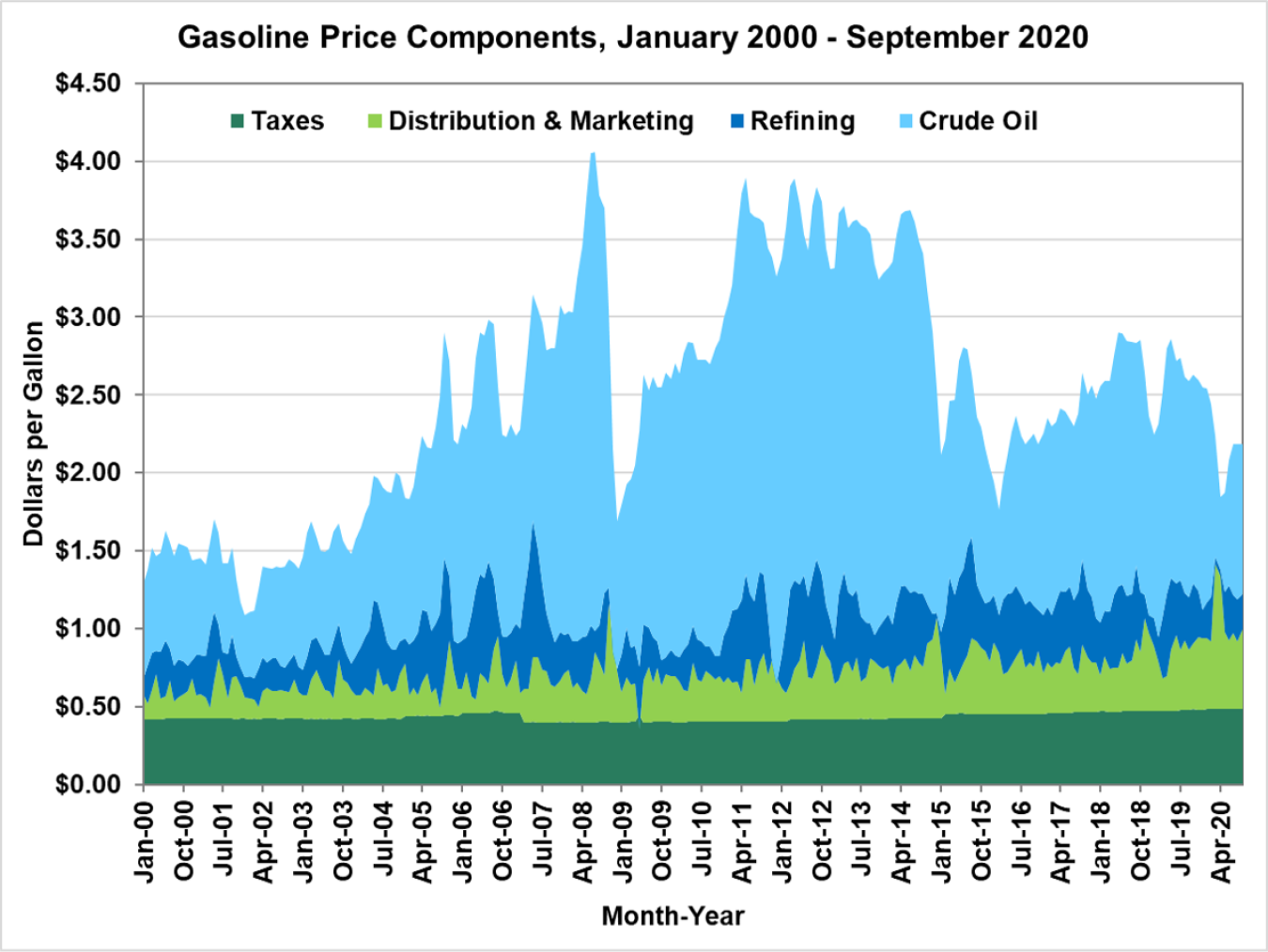The price consumers pay for gasoline is determined by the cost components that make up the retail price of gasoline.
February 1, 2021The price consumers pay for gasoline is determined by the cost components that make up the retail price of gasoline, including crude oil, refining, distribution and marketing, and taxes. Crude oil is the largest and most volatile cost component. Large changes in the price of crude oil are often a result of economic factors, as evidenced by the precipitous drop during the Great Recession in 2008. Refining, as well as distribution, can be affected by weather events, maintenance, or transitions for seasonal fuel blends. Taxes, including both state and federal, are the most stable of the cost components of retail gasoline.

Note: Monthly average based on regular gasoline in all areas.
Source: Energy Information Administration, Gasoline and Diesel Fuel Update. Data accessed November 2020.
Return to 2021 Fact of the Week

